
American shooters have long enjoyed the combination of hair-splitting accuracy and low recoil associated with the smallbore centerfire cartridges. From the .22 Hornet and .220 Swift to the Triple Deuce to the .223 and .22-250, not to mention the modern developments like the .22 Nosler and .224 Valkyrie, there is something in the .22 centerfires for almost everyone.
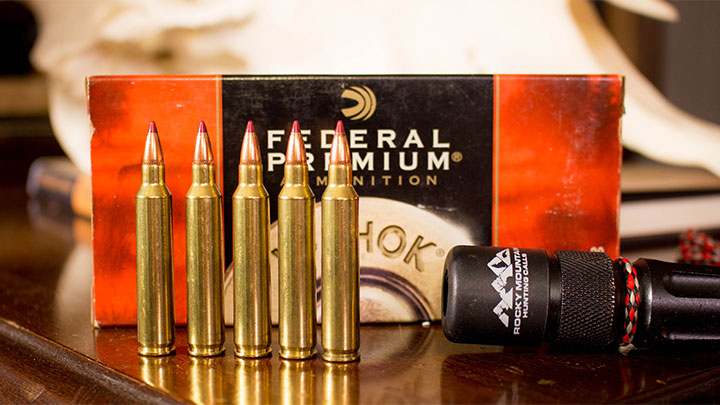
But there have been other bore diameters that this crowd has enjoyed; Remington’s 1971 release of the .17 Remington raised some eyebrows, yet the little projectiles proved to be highly susceptible to wind deflection, and the tiny bore diameter fouled quickly and required a specialty cleaning rod. Two years prior, Remington released the 5mm Remington Rimfire Magnum, and though it only survived for five years—in Remington rifles, anyway—it was the bore diameter that would serve a centerfire cartridge nearly four decades later.
The 5mm—like many of the metric calibers—isn’t 5mm, it’s actually 5.21mm, or .204-inch in diameter. This bore diameter would be revived when Hornady and Ruger teamed up to produce the first commercial .20-caliber centerfire: the .204 Ruger. Based on the longest of the .222 Remington family, .222 Remington Magnum, the .204 Ruger develops sizzling velocities. The Hornady 32-grain load—a middle-of-the-road choice—attains 4225 fps from a 26-inch barrel; that’s screaming fast. Want to turn a prairie dog inside out? Want to send a woodchuck to the great vegetable garden in the sky in a nanosecond? Introduce them to a 32-grain Hornady V-Max at those velocities. Vaporized.
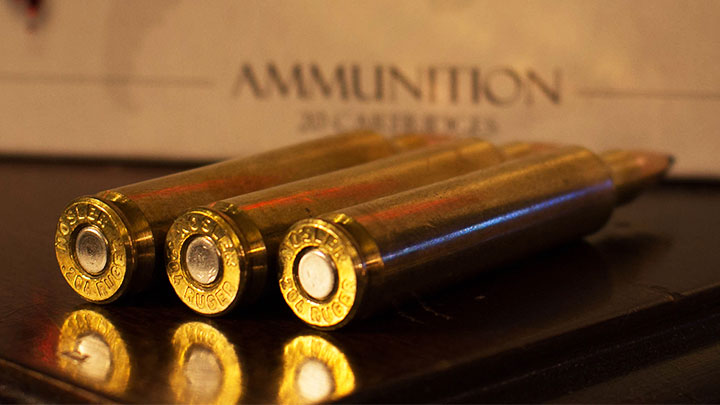
The case measures 1.85 inches long, with a cartridge overall length of 2.26 inches, and like the rest of its family is a rimless design. The 30-degree shoulder provides good headspacing, and the whole affair is sparked by a standard small rifle primer. The primary factory loads available for the .204 Ruger use the 24-, 32- and 40-grain bullets, though I have found a definite preference for the 32-grain load.
The .204 Ruger occupies that space between the .22 centerfires and the .17s, giving fantastic results on varmints and predators alike, without the wind deflection issues of the .17s, and less recoil than the .22 centerfires. Unlike the .22 centerfires cartridges—which seem to be growing in case size in order to use heavier bullets for long range target work, the .204 Ruger is not suitable for deer and similar-sized game, it is a predator/varmint cartridge, and a good one at that. It has shown to be wonderfully accurate, often holding groups in the ½ to ¾ MOA range, making it an excellent choice for precision shooting, and perfect for sniping varmints like ground squirrels, prairie dogs, woodchucks and rock chucks. It also has the kinetic energy to handle the largest coyote, as well as red and gray foxes, bobcats and other furbearers.
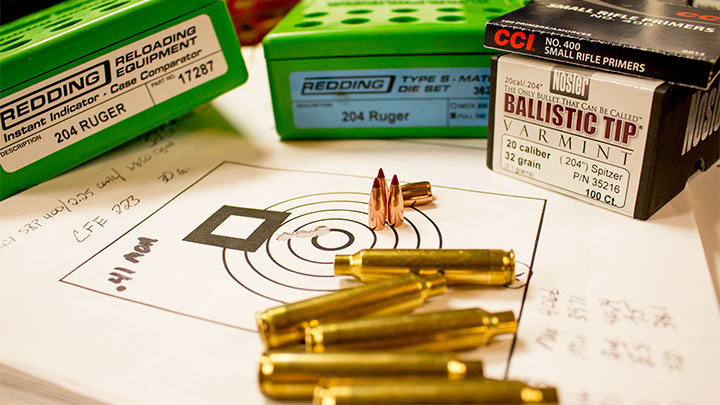
Does the .204 Ruger compare favorably to the .22 centerfires? I mean, is it worth leaving the universally celebrated .224-inch bore diameter? Well, with equal bullet weights, my favorite .22-250 Remington can beat the muzzle velocity of the .204 Ruger, but the Ruger will pull away from the .22-250 at longer ranges due to the superior ballistic coefficient. And I suppose that you need to be honest with yourself regarding the ranges at which you’ll actually be shooting; we don’t have prairie dogs here in New York where I live, and the opportunities for long-range woodchuck shooting decrease every year. Most of my shots are inside of 250 yards, and my .22-250 Remington suits me just fine.
But I’ve spent my share of time over hot prairie dog towns in both South Dakota and Wyoming, and have come to understand what is required to kill the little buggers at 700 yards. The .204 Ruger has what it takes. The 40-grain load, leaving the muzzle at 3900 fps, does very well in a crosswind, and the recoil is low enough to allow the shooter to see impact. So for that application, there might be some wisdom in choosing the .204 Ruger over a .22-250 or .223, especially if you handload your ammunition, to keep costs to a minimum, and to make sure you’ve got a constant supply of ammo, and the .204 isn’t quite as popular as the others. Flat shooter? When zeroed at 200 yards, the 40-grain .204 Ruger load from Hornady drops just 4.3 inches at 300 yards and 13.2 inches at 400; 500 yards will require 28 inches of holdover.
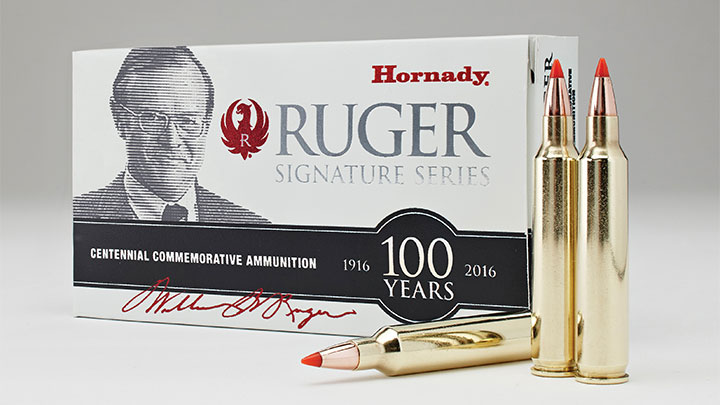
There are quite a few factory loads to choose from, not only from Hornady, but from Remington, Nosler, Sierra (that’s right, Sierra included the .204 in its new Prairie Enemy line) and from Federal, that is now loading the 32-grain Hornady V-Max. And for the handloaders, there are plenty of great component bullets available. Hornady makes excellent brass, and there are other choices, and I like the Federal GM205M primer for the most uniform results. Look to powders like Hodgdon’s CFE223, H322, Varget and Alliant RL10X for optimum performance, though expect velocities to drop off from the factory numbers by 100 to 150 fps; many of the faster factory loads use powders other than canister-grade.
Though the .204 Ruger is the only commercial .20-caliber available, there are a few noteworthy ‘wildcats’, if you will, namely the .20 VarTarg, .20 Tactical and the long awaited .20 Nosler.
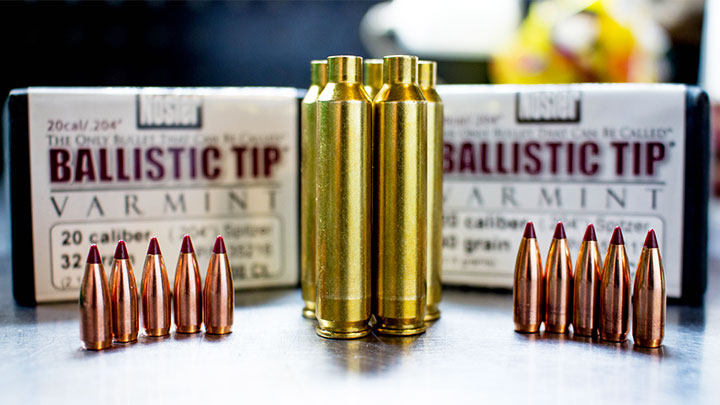
The Hornady/Ruger duo has come up with some great cartridges, from the .480 Ruger for the handgunners, to the .375 and .416 Ruger for the big-bore crowd, but the .204 Ruger has earned a special place among the small-bore aficionados. If you are shopping for a dedicated varmint rifle, you do a lot worse than choosing the .204 Ruger as the basis for your rig. I much prefer it over any of the .17s, and should I look to replace my .22-250 anytime soon, the .204 Ruger would be a serious contender.
Looking for previous installments of our "Behind the Bullet" series? We've got you covered.
• .22 Hornet
• .280 Ackley Improved
• .240 Weatherby Magnum
• .458 Lott
• .264 Winchester Magnum
• .348 Winchester
• .33 Nosler
• .260 Remington
• .30-30 Winchester
• .416 Rigby
• .358 Norma Magnum
• .22 LR
• 7mm-08 Remington
• 8mm Remington Magnum
• .338 Federal
• .224 Valkyrie
• .338-06 A-Square
• 9.3x62mm Mauser
• .257 Weatherby Magnum
• .45-70 Government
• .300 H&H Magnum
• .25-06 Remington
• .30-06 Springfield
• 6.5 Creedmoor
• .300 Remington Ultra Magnum
• 7mm Remington Magnum
• .470 Nitro Express
• .280 Remington
• .300 Winchester Magnum
• .270 Winchester
• .222 Remington
• .45 ACP
• .404 Jeffery
• .44 Remington Magnum
• .41 Remington Magnum
• .243 Winchester
• .338 Winchester Magnum
• .357 S&W Magnum
• 6.5-284 Norma
• 8x57 Mauser
• .38 Smith & Wesson Special
• 7x57mm Mauser
• 9 mm Luger
• .35 Whelen
• .454 Casull
• .375 H&H Magnum
• .45 Colt
• .22-250 Remington
• 10mm Auto
• .308 Winchester




































